9 Scenic Views of Icheon
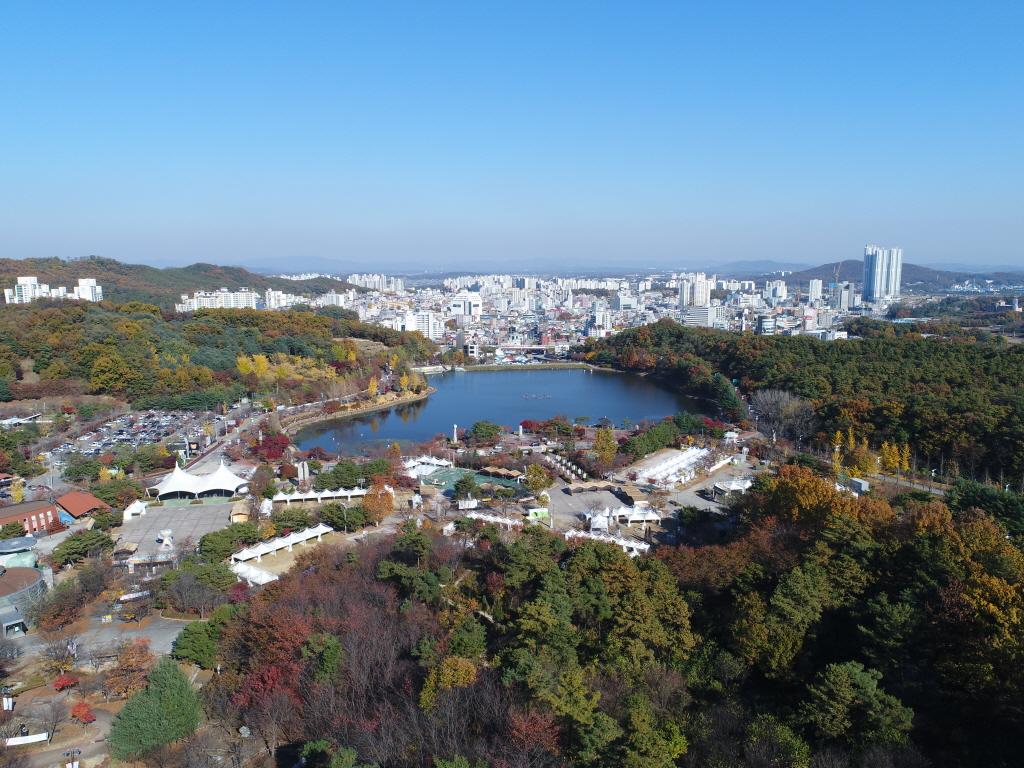
- 128, Gyeongchung-daero 2709beon-gil, Icheon-si,Gyeonggi-do
Seolbongho is a reservoir in Gwanggo-dong, Icheon City, and is also known as Seolbong Reservoir and Gwanggo Reservoir. It covers an area of 99,174 square meters, with a circumference of 1.05 kilometers and a depth of 12 meters. It is located within Seoribong Park, and is considered one of Icheon City's tourist attractions. The reservoir was approved by the Ministry of Agriculture and Gyeonggi Province in 1969 for irrigation and tourism development, and was completed in 1970. The 80-meter Gosa Fountain shoots out a cool stream of water, creating a beautiful rainbow around the lake, and the Seolbong International Sculpture Park, which displays sculptures by world-famous artists, is located around the lake. The ring road along the reservoir is used as a walking course, while the surrounding area has been transformed into an amusement park, where visitors can enjoy many activities. It is adjacent to Seolbong Mountain, the guardian mountain of Icheon, and you can visit Yeongwolam, Local Historic Site No. 14, Seolbong Confucian Academy site, and Yeongmujeong Pavilion.
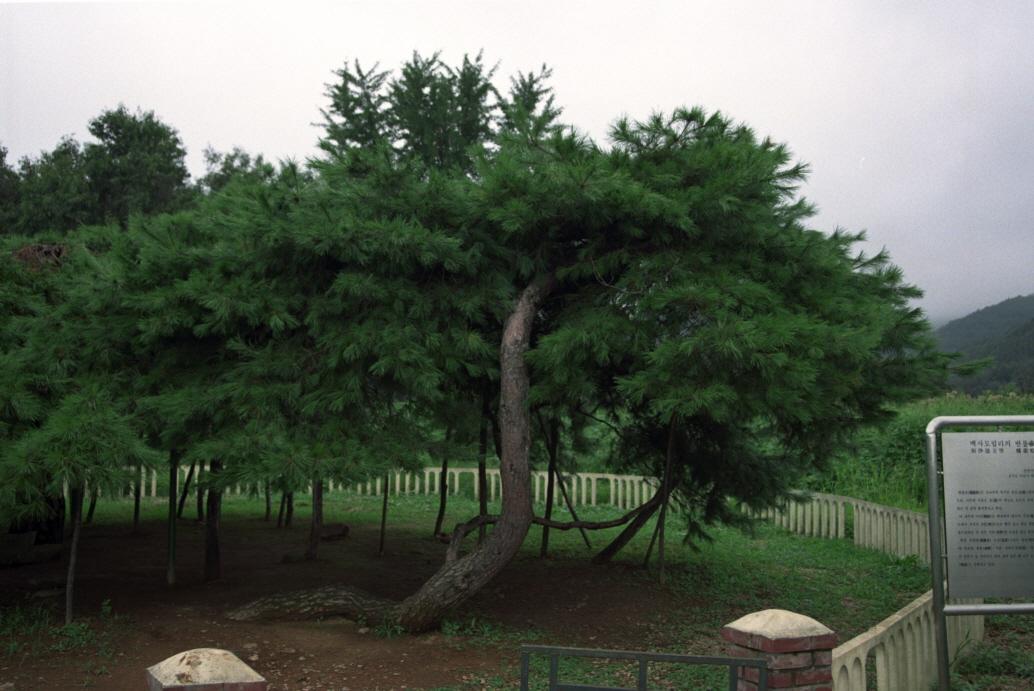
- 201-1, Dorip-ri, Baeksan-saeng, Icheon City
- Hiking information and tree age : 500-year-old Natural Monument No. 381 (December 30, 1996)
Banyongsong is a pine tree located in Dorip-ri, Icheon, Gyeonggi-do, and was designated as Natural Monument No. 381 in 1996. The name means "dragon," referring to the dragon standing on the ground before ascending to the sky. The tree is about 500 years old, with a height of 4.25 meters and a trunk circumference of 1.83 meters at breast height. It has an unusual shape with branches that branch out widely in all directions from about 2 meters above the ground. The tree is very wide compared to its height, and its branches are strangely twisted and intertwined in the shape of a dragon. It is said to be one of the pine trees planted by the monk Doseon in the late Silla period, prophesying that a great person would be born to save the country in the future. It is also called Mannyeonsong, which means a tree that will live for more than 10,000 years. There are stories in the village that it is said to be angry if it is damaged, and that a man who stripped its bark died of a disease. The tree's strange appearance makes it highly valuable as a biological resource.
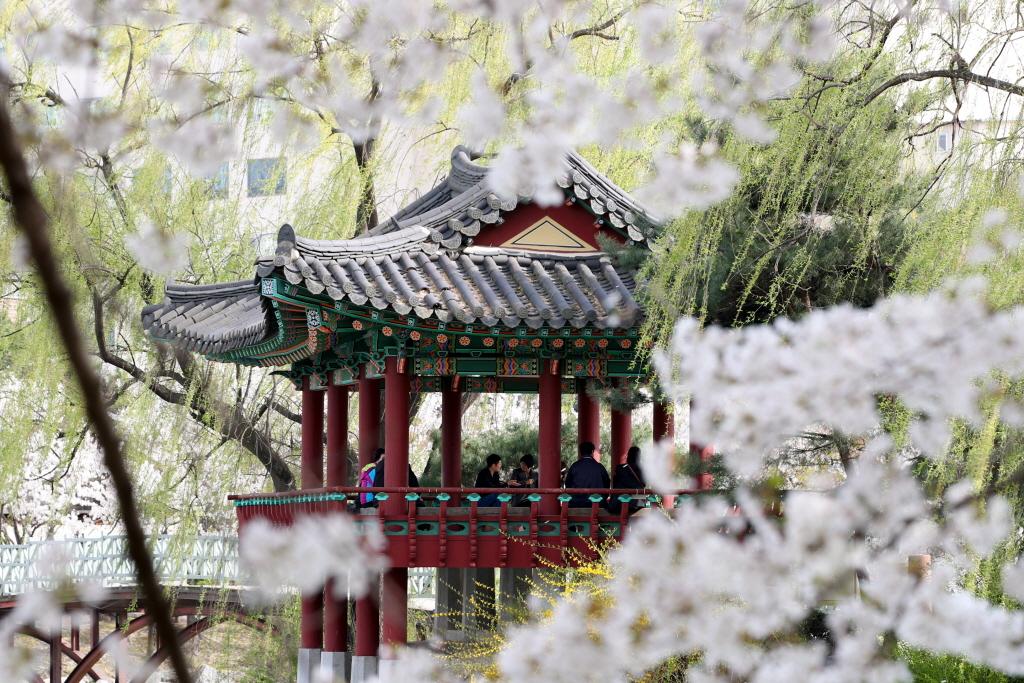
- 404, Anheung-dong, Icheon-si, Gyeonggi-do
Aeryeonjeong is a pavilion located in Anheungji, a pond surrounding Icheon Hot Spring in Anheung-dong, Icheon City. According to Im Ji-jun's "Records on Aireunjeong," it was built by Icheon governor Yi Se-bo on the eastern side of the government office. Yie Se-bo is said to have asked Sin Suk-ju, who was the prime minister at the time, to name the pavilion, Aeryeonjeong. The pavilion was restored by Icheon City in 1998, and it continues to attract visitors with its elegant traditional Dancheong painting that blends in with the surrounding landscape. The lower part of the pavilion was once a natural marshland, which was turned into a square pond. There are many poems written by Kim An-guk, Wolsan Dae-gun, Seo Geo-jeong, Jo Wi, Gang Gyeong-seo, Kim Jin-sang, and others about Aeryeonjeong. It is said that successive kings visited Aeryeonjeong on their way back from visiting the tomb of King Sejong the Great in Yeoju. According to the Joseon Dynasty Records, King Jungjeong gave a banquet for seniors at Aeryeonjeong, and there are also records of visits by other kings, such as Sukjong, Yeongjo, and Jeongjo. The exact date of its construction is unknown, but it was rebuilt in the fifth year of King Seongjong's reign (1474) by governor Yi Sebo, who requested its naming from Prime Minister Sin Suk-ju, who gave it the name Airenjeong. Restored by Icheon City in December 1998, Aeryeonjeong, with its Dancheong painting elegance, is a favorite resting place for citizens as it blends well with the surrounding landscape of Anheungji.
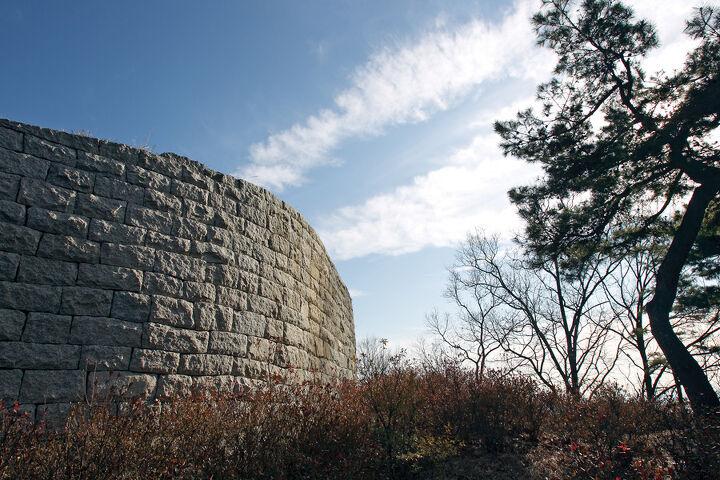
- San 24, Saeum-dong, Icheon-si, Gyeonggi-do
Seolbongsanseong Fortress is a mountain fortress from the Three Kingdoms period located in Saeum-dong, Icheon City, Gyeonggi-do, designated as Historic Site No. 423. It is also known as Buhaksanseong Fortress, Muhaksanseong Fortress, and Gwangori Fortress. It is an enclosed mountain fortress built by enclosing a valley, and is located on a plateau of 30,000 square meters centered on the Kalbawi, the 7th and 8th ridge of Seoribong Mountain. You can see the surrounding areas, such as Icheon City, Janghowon, Yangpyeong, and Anseong. The fortress consists of a main area fortress and two observation towers, and while most of the walls are made of earth, there are stone pillars here and there. However, the stone walls are mostly collapsed or buried. It was a stronghold during the Baekje period, the Goguryeo occupation, and Silla's entry into the Han River basin in the late Three Kingdoms period and the unification of the Three Kingdoms. It is also where earthenware production was active, and traces of earthenware culture from Baekje, Silla, and Unified Silla are intermingled. Earthenware from Baekje was found in the original soil layer where the west gate of Seolbongsanseong Fortress was located, and fragments of Silla's earthenware were found in the clay layer, suggesting that it was built in Baekje during the period when Wirye Castle was built as the capital city and repaired during the Silla period. Throughout the fortress, plain roof tiles, earthenware, porcelain, stoneware, and ironware from the Three Kingdoms period and the Unified Silla period were excavated. Moreover, artificial foundation stones, command platform site, sacrificial sites, and rocks with military flags were found. Seolbong Mountain is the guardian mountain of Icheon, and a plateau of about 30,000 pyeong centered on the mountain's 7th and 8th ridges, commonly known as Kalbawi, is the site of the ancient fortress. In this area, stone walls, stone fragments, earthenware fragments, as well as nine man-made cornerstones with a frontal height of 9 meters and a side height of 6.30 meters are arranged in an orderly manner, indicating that this is the site of a grand-scale Three Kingdoms period fortress.
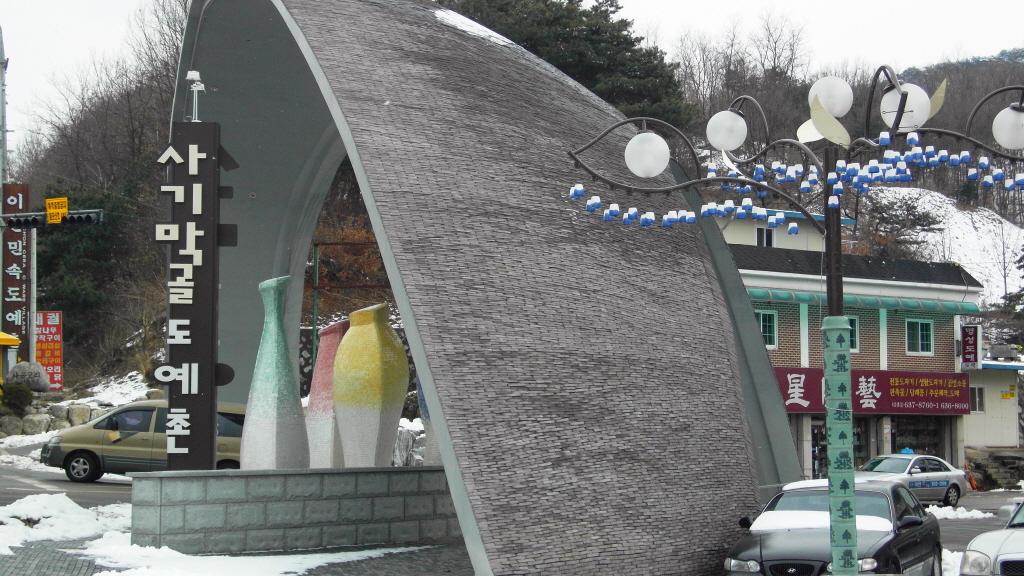
- 2995, Gyeongchung-daero, Icheon-si (Saeum-dong, Sindun-myeon)
The area around Saeum-dong and Sindun-myeon in Icheon City is a pottery village with a high concentration of potters representing Icheon. Here, potters gathered to study the lost art of making traditional ceramics, and succeeded in recreating the beauty of Goryeo celadon and Joseon white porcelain. It has grown into a center for Korean traditional ceramics that keeps the artistic spirit alive. As you drive along Icheon National Road 3, you'll see a large sign for Sagimakgol Pottery Village. With the pottery village located in the Saeum-dong neighborhood of Icheon City, you'll find large and small pottery shops throughout the village, as well as pottery kilns on every street corner.
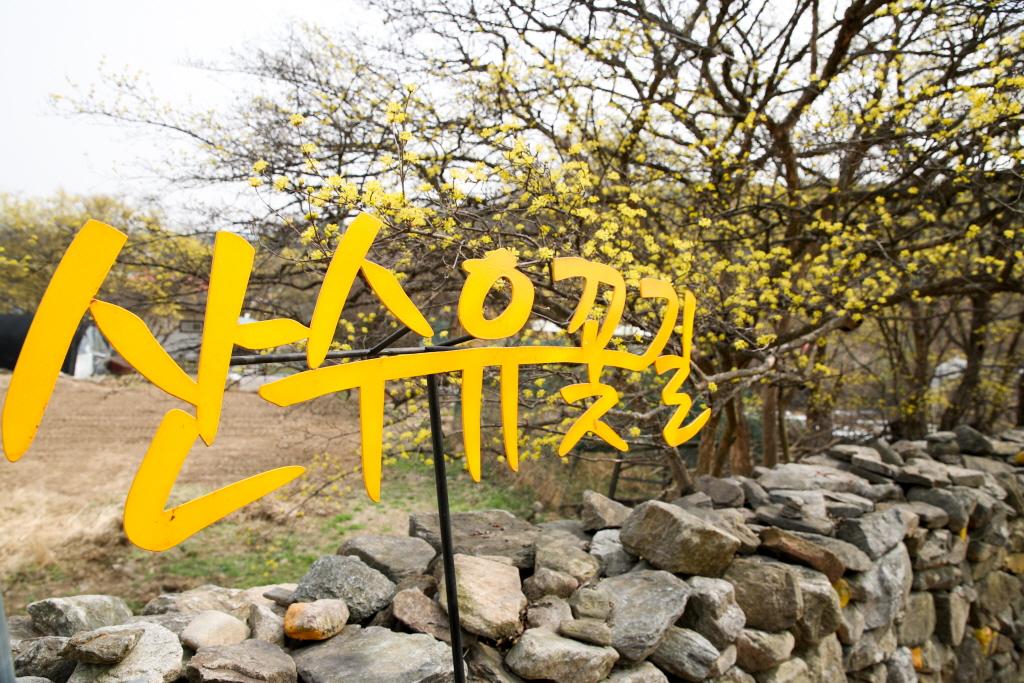
- 17, Wonjeok-ro 775beon-gil, Icheon-si, Gyeonggi-do
Sansuyu Village, where the Sansuyu Flower Festival is held every spring to coincide with the flowering season, is known for its beautiful scenery with yellow flowers in early spring and red berries in the fall, as well as its high-quality Sansuyu (Japanese cornelian cherry), one of the best in the country. Furthermore, the village offers themed experiences using Sansuyu (chocolate and soap making), traditional games, pressed flower making, and flower tea blending. At the entrance is the village-run Hanok Sansuyu House, where families and groups can experience and stay in a Hanok (traditional Korean house) at any time. There is free parking for more than 400 cars. The Lovers' Path and Sansuyu Trail, which are connected through the village from the parking lot, offer relaxing walks that are great for cleansing your mind and body in nature.
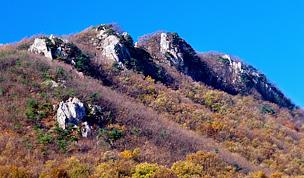
- San 144, Jangam-ri, Majang-myeon, Icheon-si
Also known as Jeemyeongsan, meaning the Pig's Cry Mountain. Once upon a time, a filial person was tying a rope to a cliff to pick stonecrop mushrooms, which were said to have special healing properties for his widowed mother, when he heard the cries of a wild pig. He looked up to see that the rope was almost broken. Since then, it was said that the mountain spirit saved the life of the protégé, and the mountain was called Dotulumsan (pig cry), which later became Dodramsan Mountain. The height of the mountain is 349 meters, and the main ridge is composed of rocks, making it a thrilling place to climb. The three peaks near the summit are considered one of the most representative views of Icheon.
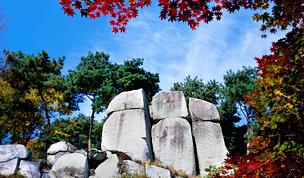
- San 66-1, Gwango-dong, Icheon-si
About a 15-minute hike from the entrance of the Seolbongsan Mountain trailhead, you'll see three large rocks standing side by side on the mountainside. They are called the Seolbongsan Samhyeongjebawi (Three Brothers Rocks), and are designated as the third of Icheon's nine scenic spots. The three rocks stand side by side, and the sad legends of three filial brothers have been passed down. Three filial brothers lived in a poor family with their elderly mother. One day, the brothers went to the mountains to chop wood and did not return until late, so their mother went to the mountains. After returning home, the three brothers went back to the mountain to look for their mother, but when they saw her being chased by a tiger, they were surprised and jumped down the cliff at the same time to save her. At that moment, the three brothers turned into three chunks of rock. In another legend, the three brothers, who were raising their widowed mother, went away to be soldiers for three years. Their mother waited for them for three years, hoping that they would be safe, but they never returned, and she eventually passed away. When the three brothers returned, they fell on their mother's grave and wept for a long time, and were left as three lumps of rock.
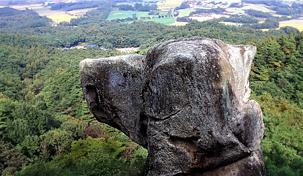
- Noseongsan, 238-7, Jinsangmiro, Seolseong-myeon, Icheon-si
Noseongsan Horsehead Rock is a rock that rises on the ridge of the seventh part of Noseongsan Mountain, straddling Icheon-si Seolseong-myeon and Anseong-si Iljuk-myeon in Gyeonggi-do. It is said that, once upon a time, the generals stationed at each mountain fought for control of a brave horse that appeared between Mount Noseong, Mount Maguk, and Mount Seolseong. They decided to claim the horse's head, body, and tail in the order of victory. As a result of the fight, the general from Mount Noseong took the head, the general from Mount Maguk took the body, and the general from Mount Seolseong took the tail. It is said that the horsehead rock has been left on Mount Noseong ever since. Noseongsan Horsehead Rock is called one of eight scenic spots of Icheon and is visited by many tourists. There are many other strangely shaped rocks that resemble the shape of a horse's head, such as Folding Screen Rock and Cave Rock. A hike up Mount Noseong takes about two hours, and Noseongsan Citizen's Park is located at the base of the mountain.
